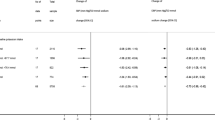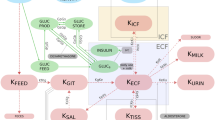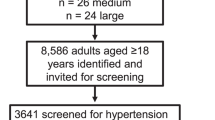Abstract
RECENTLY, it has been shown that an examination of the concentrations of sodium and potassium in the red blood cells of sheep enables two types of animal to be recognized within a breed1. Sodium concentration varies inversely with potassium concentration, and determination of the latter allows the two types to be distinguished. These two types have been called ‘high potassium’ (HK) and ‘low potassium’ (LK). A large number of repeated examinations of many sheep have been carried out, and in no case has the electrolyte type of any sheep changed from HK to LK or vice versa.
This is a preview of subscription content, access via your institution
Access options
Subscribe to this journal
Receive 51 print issues and online access
$199.00 per year
only $3.90 per issue
Buy this article
- Purchase on SpringerLink
- Instant access to full article PDF
Prices may be subject to local taxes which are calculated during checkout
Similar content being viewed by others
References
Evans, J. V., Nature, 174, 931 (1954).
Kerr, S. E., J. Biol. Chem., 117, 227 (1937).
Author information
Authors and Affiliations
Rights and permissions
About this article
Cite this article
EVANS, J., KING, J. Genetic Control of Sodium and Potassium Concentrations in the Red Blood Cells of Sheep. Nature 176, 171 (1955). https://doi.org/10.1038/176171a0
Issue date:
DOI: https://doi.org/10.1038/176171a0
This article is cited by
-
Red blood cell glycolysis and potassium type in sheep
Experientia (1977)
-
The effect of anti-L on ouabain binding to sheep erythrocytes
The Journal of Membrane Biology (1975)



